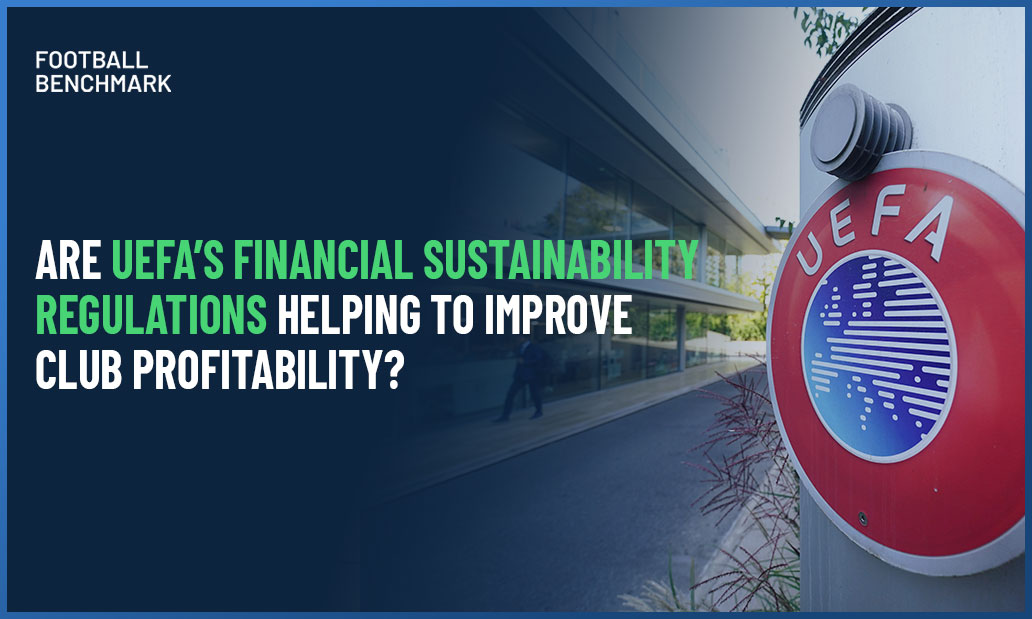
UEFA first introduced Financial Fair Play (FFP) in 2010 to strengthen financial discipline in European football. The aim was to ensure that clubs lived within their means and operated on a more responsible long-term footing. Within a few years, the framework began to have a tangible effect. By 2017, aggregate losses across European club football had turned into collective profitability for the first time.
That momentum was interrupted by the COVID-19 pandemic. Revenues dropped sharply, costs remained high, and many clubs returned to loss-making positions. When UEFA launched its new Financial Sustainability Regulations (FSR) in 2022, President Aleksander Čeferin noted that the “evolution of the football industry, alongside the inevitable financial effects of the pandemic, has shown the need for wholesale reform and new financial sustainability regulations”.
The FSR framework is more robust than its predecessor, built around three key pillars: solvency, stability, and cost control. It broadens the focus beyond profitability alone to consider the overall financial health of clubs. That said, profitability remains one of the key financial indicators within the system and provides a valuable measure through which to assess its early impact.
Three seasons into its gradual implementation, this analysis looks at whether the FSR is translating into greater profitability, based on financial data from a sample of 24 leading European clubs across England, France, Germany, Italy, the Netherlands, Portugal, Scotland, Spain, and Türkiye with available 2024/25 figures, offering a representative view of how top teams are adapting to the new framework.
This analysis covers a sample of 24 European clubs: AC Milan; ACF Fiorentina; AFC Ajax; AZ Alkmaar; Bologna FC 1909; Borussia Dortmund; Celtic FC; FC Barcelona; FC Bayern München; FC Internazionale Milano; FC Porto; FC Twente; Feyenoord Rotterdam; Galatasaray SK; Juventus FC; Manchester United FC; Paris Saint-Germain FC; PSV Eindhoven; Real Madrid CF; SL Benfica; Sporting Clube de Braga; Sporting Clube de Portugal; SS Lazio; Vitória de Guimarães.
Profitability shows clear improvement
The aggregate net result of the European clubs analysed has improved markedly over the past three seasons, moving from a collective average loss of €296 million in 2022/23 to an overall average profit of €100 million in 2024/25. This shift of nearly €400 million highlights a clear upward trajectory in profitability within the sample.
The substantial reduction in losses at Juventus FC and Paris Saint-Germain FC, together with FC Internazionale’s first profitable season in the 21st century, constitute some of the most significant financial improvements observed over the past three seasons.
While results vary between leagues and individual clubs, the overall direction is consistent. Losses have narrowed, several clubs have returned to surplus, and the group of selected clubs is operating on a stronger financial footing. The trend suggests that Europe’s leading clubs are moving toward greater stability as the regulations take effect.
Operating revenue growth has supported this recovery
Average operating revenues across the 24 clubs increased from €298 million in 2022/23 to €362 million in 2024/25, a rise of around 21%. This upward trend in core revenues has provided the financial basis for the improvement in aggregate net results seen across the sample.
Top clubs are increasingly generating more revenue through commercial activities, with continued expansion in sponsorship as clubs continue to build global brands. Matchday income has also been an important contributor, with several clubs significantly investing in stadium infrastructure in recent years. For instance, Real Madrid recorded a 43% increase in operating revenues over this period, reflecting the impact of the new Santiago Bernabéu. The additional income generated by the new format of the UEFA Champions League and the new FIFA Club World Cup has also played a crucial role. Furthermore, participation in UEFA Club Competitions has had a clear influence on the revenue performance of some of the selected clubs as well. Bologna FC 1909, for example, recorded a 141% increase in operating revenues over the analysed period, reflecting the benefits of qualification for European competition.
The consistency of growth over the three seasons indicates that leading clubs are rebuilding and diversifying their income base, providing a stronger and more sustainable foundation for profitability under the new regulatory framework.
Total revenues including player trading
When including player trading, the average total income of the 24 clubs increased from €323 million in 2022/23 to €398 million in 2024/25, representing a 23% rise. While transfer activity continues to play a role in some clubs’ business models, the underlying data suggests that the primary driver of improvement has been the recovery and growth of recurring operating revenues rather than exceptional player sales.
While detailed cost data is not assessed in this analysis, it is evident that many clubs are taking a more measured approach to player spending and wage structures as they adapt to the new regulatory environment. The phased introduction of the squad cost ratio, which limits spending on wages, transfers, and agent fees to 70% of club revenues, is already impacting discipline.
Profitability is rising amidst growing financial stability
The first years of the FSR have coincided with a clear improvement in profitability among leading European clubs. The combined swing of nearly €400 million in aggregate net results and growth in both operating and total revenues show a sector moving towards greater balance. While other factors, such as post-pandemic recovery, have contributed to these results, the data suggest that the FSR is already having a stabilising influence on club finances, at least for a sample of leading clubs that have recently participated in European competition.
Profitability is not the sole focus of the regulations, but it remains a key indicator of financial health. The broader framework appears to be encouraging more discipline, with clubs increasingly aligning spending to revenues and planning within more sustainable parameters.
These developments also carry wider implications. As football continues to attract institutional investment, improved profitability and more predictable performance enhance the credibility and long-term value of clubs. The emergence of a more balanced operating model can strengthen confidence in the sector and support continued growth.
We will explore this topic further next week, on 27 November, with an in-depth interview with Andrea Traverso, UEFA’s Executive Director of Financial Sustainability and Research, discussing how recent regulatory reforms have influenced club finances, how they are impacting the investment landscape, and what the future may look like for financial sustainability across the European game.




